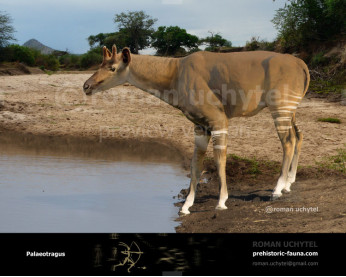Decennatherium
2028120281Decennatherium (†Decennatherium (Crusafont, 1952))
Order: Artiodactyla
Family: Giraffidae
Time period: during the Late Miocene of Southern Europe (11.6–7.8 million years ago)
Dimensions: height - 2 - 3.3 m, weight - 600 - 1000 kg.
An extinct genus of giraffids, named Decennatherium rex, was found in Spain. It was first named by Crusafont Pairo in 1952. The skeleton was unique, remarkably complete, and provided a wonderful picture of what D. rex must have been like in life.
Decennaterium had two pairs of ossicon "horns"; one short pair in front, above the eyes, and a second, long, curved, ribbed pair that turns up and back. Decennatherium rex was likely the earliest-evolving example of this ossicone layout.
This new species is the genus Decennatherium may have been the most basal branch of a clade of now-extinct giraffids containing both sivatheres, the largest known giraffids, and samotheres, whose appearance was somewhere in between that of okapis and giraffes.
“The inclusion of this species in the sivathere-samothere clade would extend its timespan back to the early late Miocene and its range as far as the Iberian Peninsula, making the clade one of the most successful and long-lived of all the giraffids.”
Decennatherium (†Decennatherium (Crusafont, 1952))
Order: Artiodactyla
Family: Giraffidae
Time period: during the Late Miocene of Southern Europe (11.6–7.8 million years ago)
Dimensions: height - 2 - 3.3 m, weight - 600 - 1000 kg.
An extinct genus of giraffids, named Decennatherium rex, was found in Spain. It was first named by Crusafont Pairo in 1952. The skeleton was unique, remarkably complete, and provided a wonderful picture of what D. rex must have been like in life.
Decennaterium had two pairs of ossicon "horns"; one short pair in front, above the eyes, and a second, long, curved, ribbed pair that turns up and back. Decennatherium rex was likely the earliest-evolving example of this ossicone layout.
This new species is the genus Decennatherium may have been the most basal branch of a clade of now-extinct giraffids containing both sivatheres, the largest known giraffids, and samotheres, whose appearance was somewhere in between that of okapis and giraffes.
“The inclusion of this species in the sivathere-samothere clade would extend its timespan back to the early late Miocene and its range as far as the Iberian Peninsula, making the clade one of the most successful and long-lived of all the giraffids.”

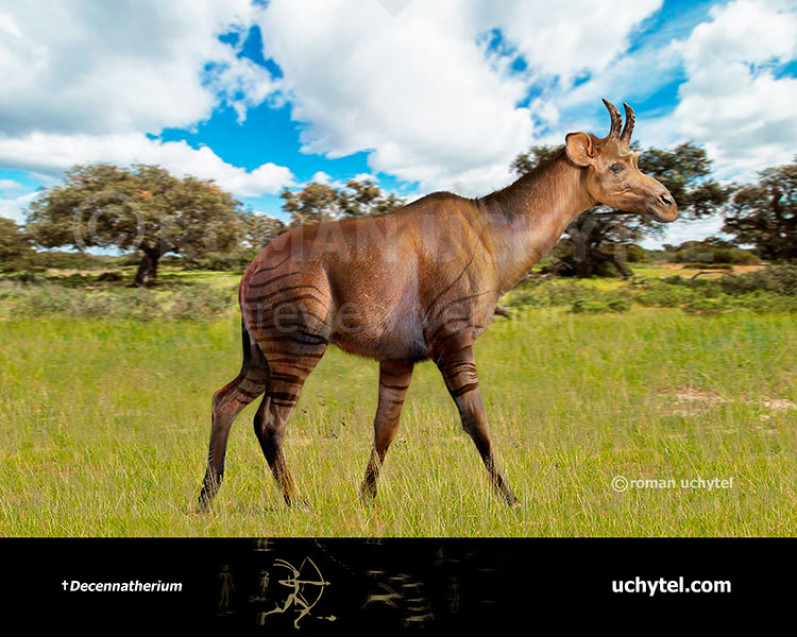

1-797x638.jpg)
-797x638.jpg)


1-70x56.jpg)
-70x56.jpg)
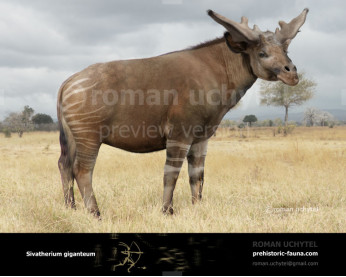
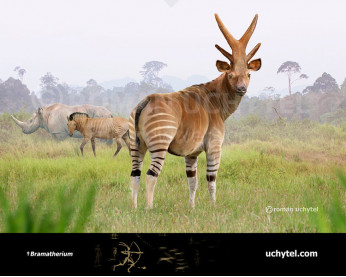
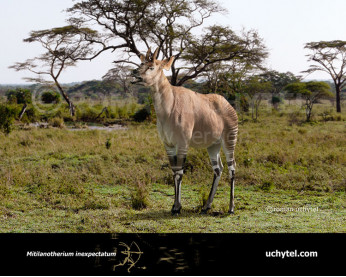
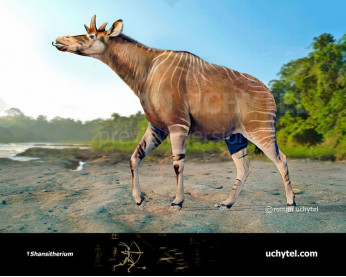
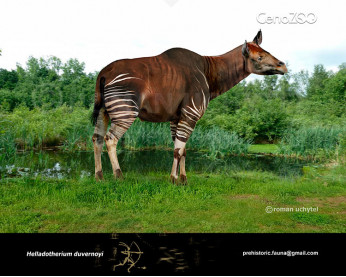
-346x277.jpg)
